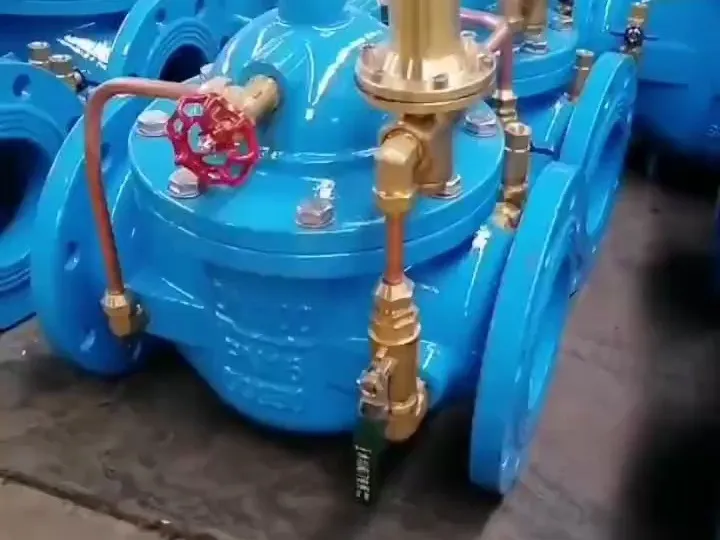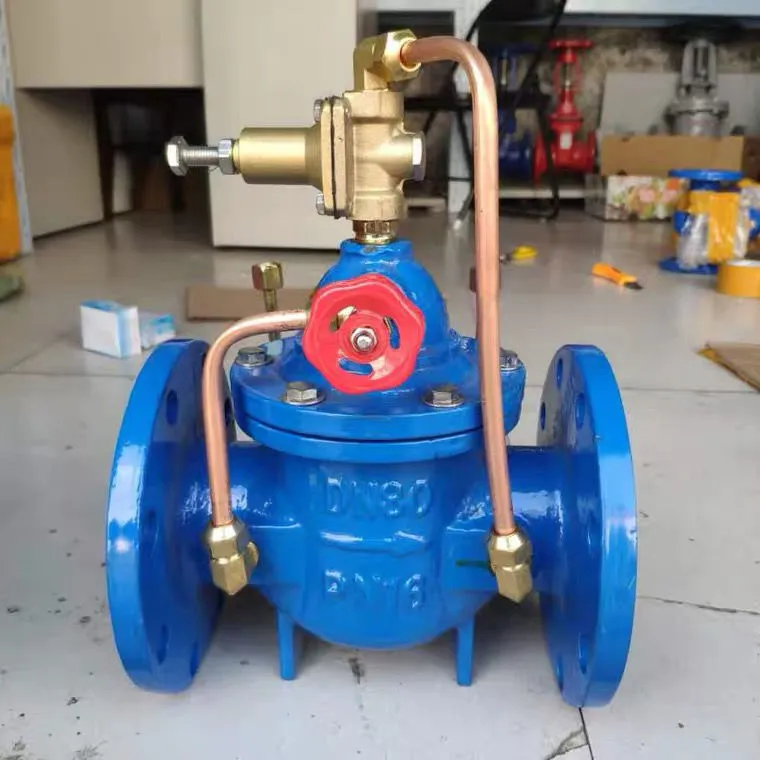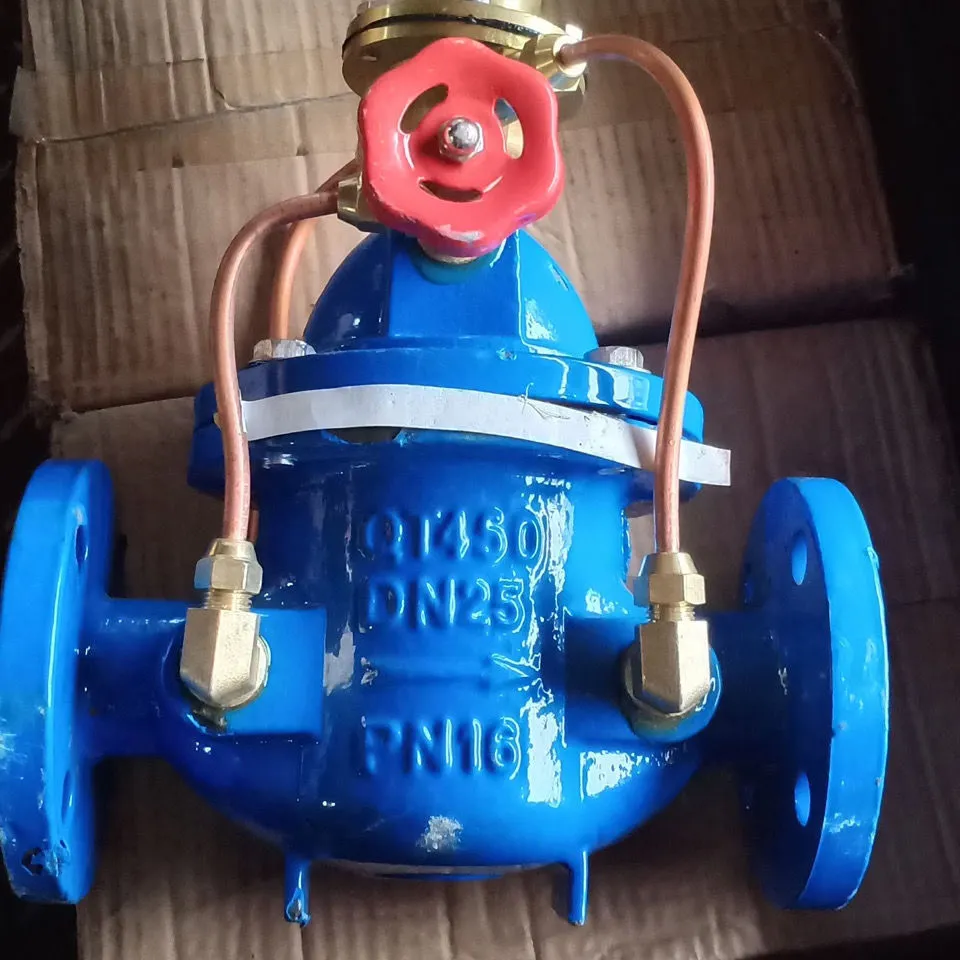Giu . 09, 2025 09:44 Torna alla lista
Functions of Control Valve in Hydraulic System
In the intricate and dynamic realm of hydraulic systems, control valves stand as the linchpin for achieving precise and reliable operation. These valves are not merely mechanical components but sophisticated regulators that dictate the behavior of hydraulic fluid, ensuring that the system functions in harmony with the demands of various applications. Control valves in hydraulic systems play a multifaceted role, encompassing everything from managing fluid flow to safeguarding the system against potential hazards. Among them, pressure control valves specialize in maintaining optimal pressure levels, a critical function that underpins the overall performance and longevity of the hydraulic system.

Pressure Management by Pressure Control Valves
Pressure control valves are specifically designed to manage and regulate the pressure within hydraulic systems. Their primary function is to maintain a stable pressure level, protecting the system from overpressure conditions that could lead to component failure or safety hazards. Relief valves, a common type of pressure control valve, automatically open when the pressure exceeds a preset limit, diverting excess fluid back to the reservoir and reducing the pressure in the system. On the other hand, pressure reducing valves are used to lower the pressure in specific branches of the hydraulic system, ensuring that downstream components operate within their safe pressure range. In industrial hydraulic presses, pressure control valves are essential for maintaining the required pressure to perform tasks such as metal stamping and forming. By precisely managing pressure, these valves enhance the reliability and safety of hydraulic systems while optimizing the performance of connected equipment.
Directional Control with Control Valves
Control valves in hydraulic systems also play a vital role in directional control, determining the path that hydraulic fluid takes through the system. Directional control valves, such as spool valves and poppet valves, direct the flow of fluid to different actuators, enabling them to extend, retract, rotate, or change direction. In a hydraulic crane, for example, directional control valves are used to control the movement of the boom, jib, and hoist mechanisms. By switching the position of the valve, operators can change the direction of fluid flow, allowing the crane to lift, lower, and move loads with precision. This directional control function is fundamental for the versatility and functionality of hydraulic systems, enabling them to perform a wide range of complex tasks in various applications, from manufacturing and construction to agriculture and transportation.

System Protection by Control Valves
Another crucial function of control valves in hydraulic systems is system protection. In addition to the pressure - regulating function of pressure control valves, other types of control valves contribute to safeguarding the system from damage. Check valves, for instance, allow fluid to flow in only one direction, preventing backflow that could cause damage to pumps, motors, or other components. Counterbalance valves are used to hold loads in place and prevent them from descending unexpectedly, enhancing safety in applications where loads are suspended or lifted. By incorporating these protective control valves, hydraulic systems are better equipped to handle sudden changes in pressure, flow, or load conditions, reducing the risk of component failure, system breakdowns, and potential accidents. This protection not only extends the lifespan of the hydraulic system but also ensures the safety of operators and the surrounding environment.
Performance Optimization with Control Valves
Control valves contribute significantly to the overall optimization of hydraulic system performance. By precisely regulating flow, pressure, and direction, these valves enable the system to operate at peak efficiency. Properly adjusted control valves minimize energy losses, reduce heat generation, and improve the responsiveness of hydraulic actuators. In high - performance hydraulic systems, such as those used in aerospace and automotive testing, the fine - tuning of control valves can make a substantial difference in system performance. Additionally, modern control valves often incorporate advanced technologies, such as electronic control and feedback mechanisms, which further enhance their ability to optimize system performance. By continuously monitoring and adjusting the valve's operation based on real - time system data, these intelligent control valves ensure that the hydraulic system operates at its best, delivering consistent and reliable performance.

Control Valve in Hydraulic System FAQS
How do control valves regulate flow?
Control valves regulate flow by manipulating the cross - sectional area through which hydraulic fluid travels in a hydraulic system. Flow control valves, a type of control valve, can adjust their opening size, much like a faucet controls water flow. By changing this size, they can throttle or increase the volume of fluid passing through. Directional control valves work in conjunction with flow control valves, directing the fluid to specific hydraulic actuators. In a hydraulic system that powers a robotic arm, for example, control valves precisely manage the flow to each joint's actuator. This coordinated effort ensures that the right amount of fluid reaches the components at the appropriate time, controlling the speed and power output of the actuators and optimizing the performance of the entire hydraulic system.
What is the role of pressure control valves in pressure management?
The role of pressure control valves in pressure management is to maintain stable and safe pressure levels within hydraulic systems. Relief valves, a key type of pressure control valve, act as a safeguard. When the pressure in the system exceeds a pre - set limit, they automatically open, diverting excess fluid back to the reservoir to reduce pressure and prevent overpressure situations that could damage components or pose safety risks. Pressure reducing valves, on the other hand, are utilized to lower the pressure in specific parts of the system. This ensures that downstream components operate within their safe pressure ranges. In a vehicle's hydraulic braking system, pressure control valves are essential for maintaining the correct pressure to enable effective braking while protecting the system from excessive stress, thus ensuring the stability, safety, and proper functioning of the hydraulic system.
How do control valves enable directional control?
Control valves enable directional control through the operation of directional control valves, such as spool valves and poppet valves. These valves change the position of their internal components to direct the flow of hydraulic fluid. When in one position, the fluid is routed to a particular set of hydraulic actuators, causing them to perform an action like extending a cylinder. By shifting the valve to a different position, the flow path of the fluid is altered, redirecting it to other actuators or changing its direction. In a hydraulic - powered forklift, directional control valves are used to manage the movement of the lift mechanism and steering. By controlling the direction of fluid flow to the relevant hydraulic components, operators can precisely maneuver the forklift, highlighting the crucial role of control valves in providing the versatility and functionality needed for various hydraulic system operations.
In what ways do control valves protect hydraulic systems?
Control valves protect hydraulic systems through multiple mechanisms. Pressure control valves, like relief valves, release excess fluid when pressure reaches dangerous levels, protecting components from damage due to excessive stress. Check valves, another type of control valve, allow fluid to flow in only one direction. This prevents backflow, which could lead to the reverse operation of pumps or damage to other components.
How can control valves optimize system performance?
Control valves optimize system performance by precisely regulating flow, pressure, and direction within hydraulic systems. By adjusting the flow rate, they ensure that hydraulic actuators receive the ideal amount of fluid, reducing energy losses and heat generation for efficient operation. Properly configured pressure control valves maintain optimal pressure levels, allowing components to function at their best without being exposed to excessive stress. Directional control valves accurately direct the fluid to the required actuators, enabling smooth and precise operation. Moreover, modern control valves often integrate advanced technologies such as electronic control and feedback mechanisms. These features allow the valves to continuously monitor and adjust their operation based on real - time system data, enabling fine - tuning of the system. This intelligent control improves the system's responsiveness and ensures consistent and reliable performance across a wide variety of operating conditions.
-
Heavy Duty Knife Gate Valve PerformanceNotiziaJul.25,2025
-
Choosing Between Gate and Globe Gate Valves for Optimal PerformanceNotiziaJul.25,2025
-
Cast Iron Y Strainer DurabilityNotiziaJul.25,2025
-
Ball Style Check Valve MaintenanceNotiziaJul.25,2025
-
Types of Strainer in Piping SystemsNotiziaJul.25,2025
-
The Role of Master Ring Gage in Quality Control SystemsNotiziaJul.25,2025
Prodotti correlati









